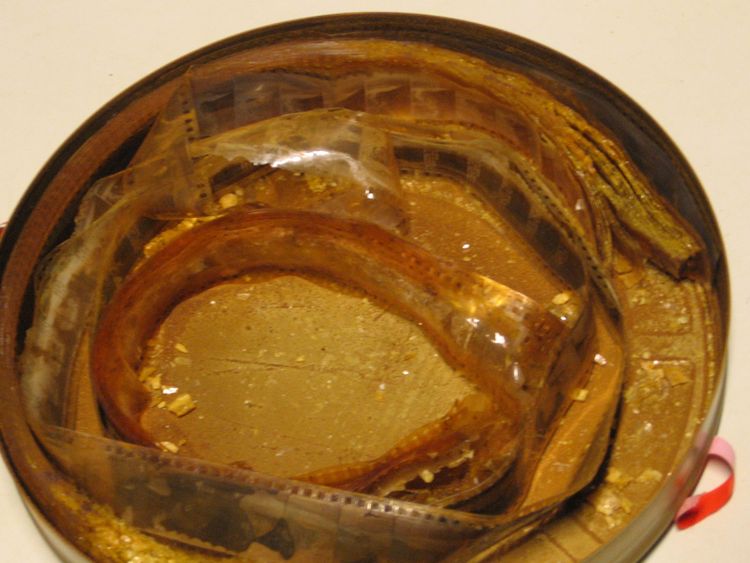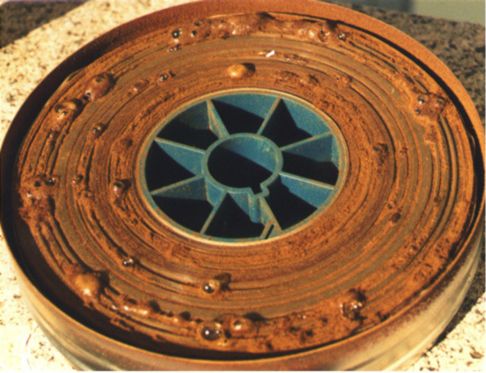Nitrate Film
Nitrate film looks like old-fashioned celluloid film from days of yore.
 Why is nitrate film a hazard we need to think about?
Why is nitrate film a hazard we need to think about?
Nitrate film is hazardous because it can break down and become highly flammable. If it does catch alight, the fire is difficult to put out because the nitrate releases oxygen as it decomposes.
 How can we confirm it is nitrate film?
How can we confirm it is nitrate film?
Identifying nitrate film is fairly straightforward:
- If it is 35 mm wide with perforations on both edges and manufactured before 1951, it could be nitrate. This is confirmed if the word “nitrate” is printed along one edge with the perforations.
- If your film smells of mothballs or camphor, it could be nitrate.
- If your film shows signs of bubbling, a honey-like goo, or a fine, rust-coloured powder, it is probably nitrate in an advanced stage of deterioration.
- If your film is 16 mm, 8 mm, or 9.5 mm, it is NOT nitrate.
- If your film smells of vinegar it is NOT nitrate.
 What do museums, galleries, libraries, and archives have to do if they have nitrate film?
What do museums, galleries, libraries, and archives have to do if they have nitrate film?
Under the right circumstances, nitrate film may last in good condition for decades or generations. For medium or long-term storage, these conditions are considered satisfactory:
- Store separately from other film
- Store below 21°C (70°F) if possible
- Relative humidity of 20 – 50% is ideal
- Ensure the storage cans are not sealed tight
Where this maximum temperature and humidity are exceeded, and complete air conditioning is unavailable, dehumidification by machine would be of some advantage. Cooling alone, without automatic relative humidity control, is also beneficial, since a considerable amount of moisture can be condensed out of the air on cooling coils.
If it's not possible to store the film as recommended, consider having it copied and then destroyed.
 How can museums and galleries manage nitrate film in their collections?
How can museums and galleries manage nitrate film in their collections?
Have a nitrate film safety plan where you identify any nitrate film, assess the risk, have procedures for dealing with the risks, and ensure staff are trained in dealing with nitrate film.
How can I dispose of any nitrate film?
Handle unstable or deteriorated nitrate films much like you would explosives. Keep such films underwater in an open suitable steel drum until disposal can be arranged. Any substantial quantity of films, whatever their apparent condition, should be treated as unstable.
If you wish to dispose of any nitrate films, contact a WorkSafe-accredited company or the friendly Collections team at Tūhura Otago Museum for advice. WorkSafe encourages PCBUs to use the services of consultants who are listed on the HASANZ register:


